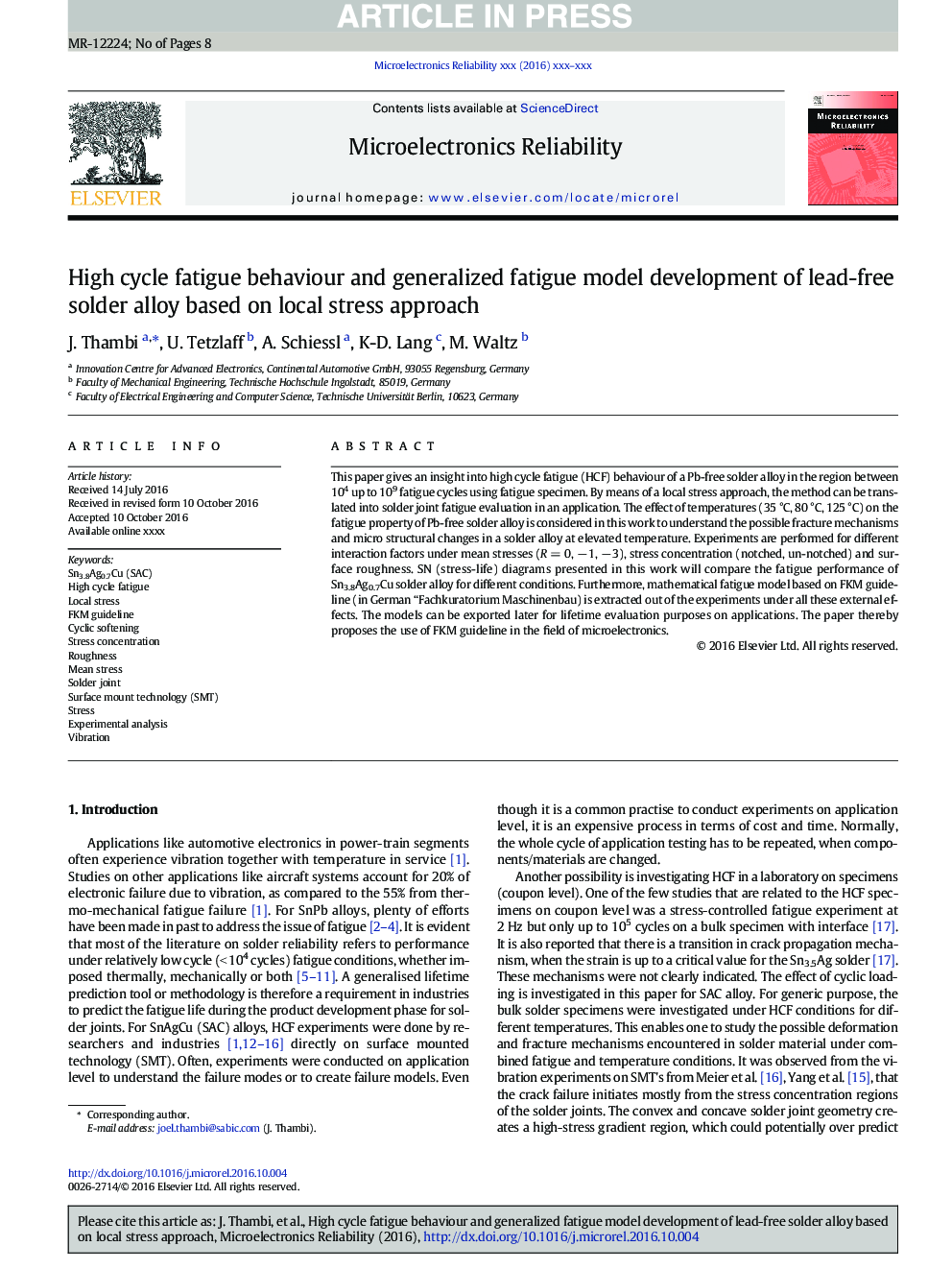| Article ID | Journal | Published Year | Pages | File Type |
|---|---|---|---|---|
| 4971715 | Microelectronics Reliability | 2016 | 8 Pages |
Abstract
This paper gives an insight into high cycle fatigue (HCF) behaviour of a Pb-free solder alloy in the region between 104 up to 109 fatigue cycles using fatigue specimen. By means of a local stress approach, the method can be translated into solder joint fatigue evaluation in an application. The effect of temperatures (35 °C, 80 °C, 125 °C) on the fatigue property of Pb-free solder alloy is considered in this work to understand the possible fracture mechanisms and micro structural changes in a solder alloy at elevated temperature. Experiments are performed for different interaction factors under mean stresses (R = 0, â 1, â 3), stress concentration (notched, un-notched) and surface roughness. SN (stress-life) diagrams presented in this work will compare the fatigue performance of Sn3.8Ag0.7Cu solder alloy for different conditions. Furthermore, mathematical fatigue model based on FKM guideline (in German “Fachkuratorium Maschinenbau) is extracted out of the experiments under all these external effects. The models can be exported later for lifetime evaluation purposes on applications. The paper thereby proposes the use of FKM guideline in the field of microelectronics.
Keywords
Related Topics
Physical Sciences and Engineering
Computer Science
Hardware and Architecture
Authors
J. Thambi, U. Tetzlaff, A. Schiessl, K-D. Lang, M. Waltz,
